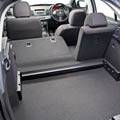 |
| 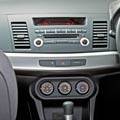 |
|
This week I discovered that sharp, pointy things can hurt. Some new cutlery came my way and the sharp, pointy blades carved significant damage to my dishwater-tenderised finger. Which, of course, is why man invented the dishwasher. During the high-pitched screaming and increasing pinkness of the sink water, it occurred to me how odd it was that the name for people who carried sharp, pointy objects into battle – with the intention to main, puncture and kill other people – is now applied to one of the world's safest small cars.
Mitsubishi's Lancer was one of the first cars to arrive in Australia with a five-star crash rating and electronic stability control as standard. It has been subsequently followed by others and Australia is a better place for it. Call it what you will, but the Lancer isn't just a safe car - it's a damn good drive.
This is the Sportback - read, hatchback - model which gives a sort of middle ground to a sedan buyer seeking a bit more flexibility and yet doesn't want to step up to an SUV, like Mitsubishi's Outlander.
Engine and gearbox
The VRX gets the same 2.4-litre engine as the Aspire model, which is - obviously - bigger than the 2-litre unit in most other Lancers. This bigger engine is meatier, with more low-end power so there is less need to rev it hard. In return, the fuel economy is pretty good and the engine noise is minimal.
Incidentally, it has the same power as the Commodore's base 5-litre V8 engine (but a lot less torque) and the same 0-100km/h acceleration time of 9.8 seconds. The engine is attached to either a five-speed manual or continuously-variable transmission (automatic).
Drivers with some warm blood in their veins can avail themselves of the paddle shifters on the steering wheel that turns the CVT's inherent rubber-band drone into six clear-cut gears to play with. The CVT, you see, is basically a steel band or pulley that spins between two moving cones. It takes the power from the engine and maximises its delivery to the wheels.
But the elastic action of the band makes the engine sound like its spinning too fast in relation to forward motion. Technically, the six preset ‘gears’ are actually six positions on the cones. In practice, forget the technical stuff and turn up the audio.
Pricing and fit-out
There's also the same variant line-up, with the tester being a top-line VRX auto costing $32,490 plus all the on-road fees. That's a reasonable price for the money. Though considered a small car, it's actually quite big. At 4.58m long, it's a cigarette pack short of a 1986 Holden Commodore - which is bound to pop up as a quiz question when you least expect it.
The intervening 24 years have produced a car that is called small - but clearly isn't - and yet features a bigger and vastly more flexible cabin layout, maximum family safety and commendable fuel efficiency. The key to the Sportback's useable features starts and ends with the rear hatch. The door opens wide and high and its yawn has been enhanced by moving everything out if the way to maximise loading space.
For example, the suspension units are low and pushed out, so virtually the full width of the door extends into the cargo space. The rear seats split and fold flat-ish and the floor can even be sunk an extra few centimetres. This latter feature, by the way, is courtesy of the Lancer's space-saver spare wheel. Theoretically, for those of you who get out of the city occasionally, a full-size spare can be optioned that will fit beneath the boot floor.
The VRX gets leather and heaps of gear, including cruise control, trip computer and a Rockford Fosgate audio system with 710-Watts pumping through nine speakers. People alongside me on the freeway we really impressed. Not!
These addition features are responsible for lifting the VRX above its oft-shunned category of a family runabout. The VRX is almost luxurious, helped by the spaciousness of the cabin and the good use of dash design and switchgear placement. However, the hard plastic is a let down and things like a satellite navigation system (optional) that is not happy with simple commands and has an ordinary screen, dumb the car down a fraction.
Overall
This is a very hard car to dislike. It's not a particularly fast car though is certainly smooth, and the 2.4 engine is quieter and more civilised than the 2-litre version, and this has a lot to do with moving the VRX up the ladder of cars I like. The price isn't especially cheap but I rate it as good value.
Speaking of cheap, be very careful about colour choice with this car. It prefers bold or dark colours, and the paler shades - silver and white particularly - just don't maximise the Sportback's classy shape or set off the big 18-inch alloys.
Rating: 86/100
Mitsubishi Lancer Sportback VRX
Price: $32,490
Engine: 2.4-litre, 4-cylinder
Power: 125kW @ 6000rpm
Torque: 226Nm @ 4100rpm
Performance: 0-100km/h: 9.8 seconds
Fuel: Standard unleaded
Fuel tank: 59 litres
Economy (official): 8.9 litres/100km
Economy (tested): 9.1 litres/100km
Emissions: 213g/km (Corolla: 175g/km)
Transmission: CVT automatic; front-drive
Brakes: 4-wheel discs, ESC, ABS, EBD, brake assist
Turning circle: 10m
Suspension: Front _ MacPherson struts; Rear _ multi-link, coils
Wheels: 18-inch alloy, 215/45R18 tyres; space-saver spare
Length: 4585mm
Width: 1760mm
Height: 1515mm
Wheelbase: 2635mm
Weight: 1435kg
Tow (max): 1000kg
Warranty: 5yr/130,000km, roadside assist (10yr/160,000km drivetrain)
Service: 15,000km
Rivals
Mazda3 SP25: ($31,920) - 87/100
Volkswagen Golf 118TSI: ($31,990) - 86/100
Subaru Impreza RS ($30,990)
Mitsubishi Lancer 2010: VR-X Sportback
| Engine Type | Inline 4, 2.4L |
|---|---|
| Fuel Type | Unleaded Petrol |
| Fuel Efficiency | 8.9L/100km (combined) |
| Seating | 5 |
| Price From | $6,050 - $8,580 |
| Safety Rating |
|
Pricing Guides














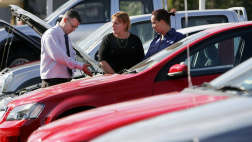
.jpg)
.jpg)


























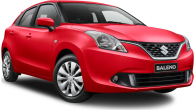








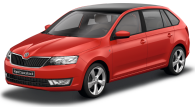

.jpg)

